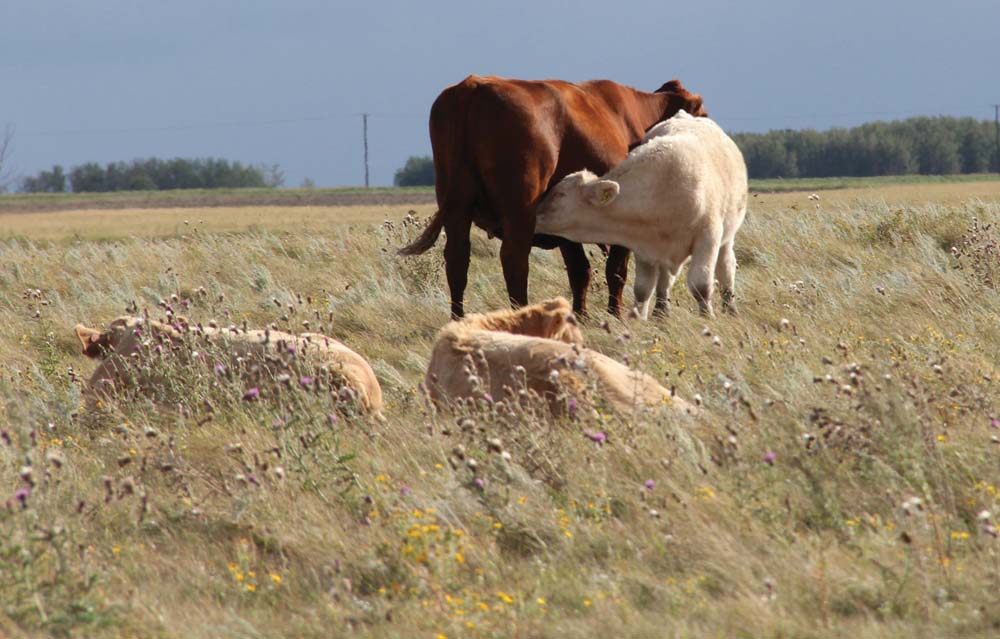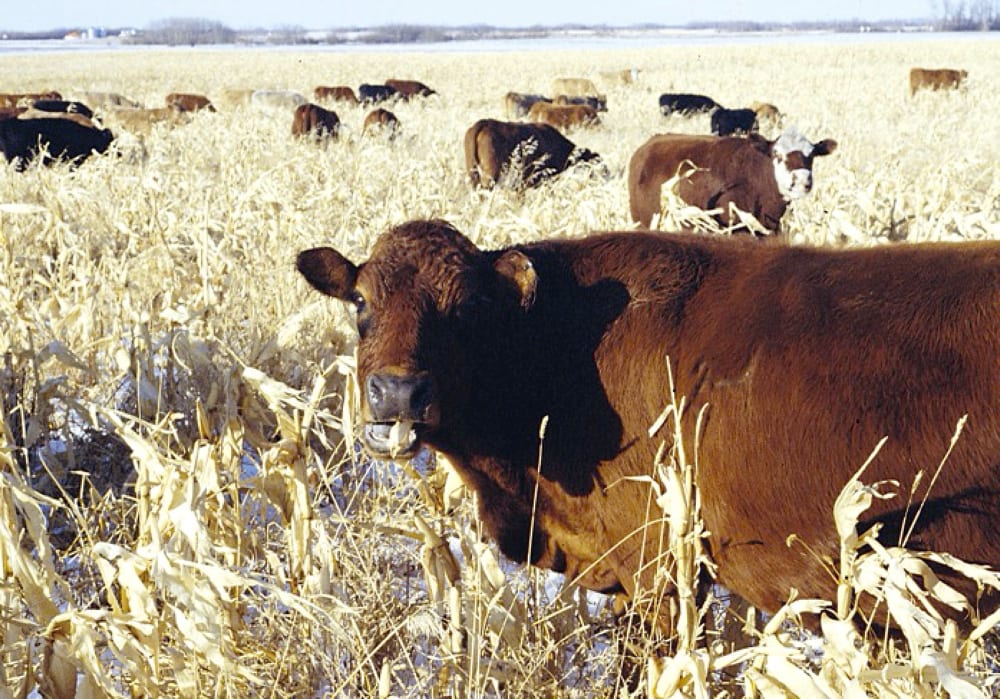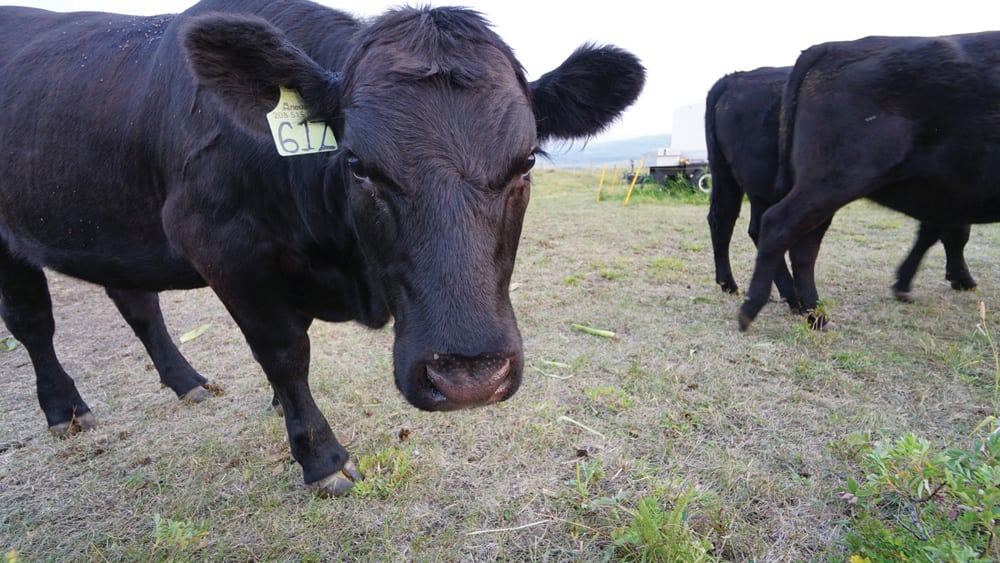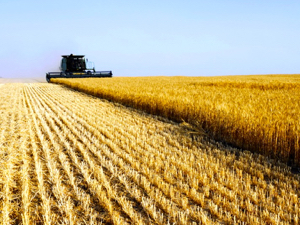Keep parasites under control lest they control your herd

Resistance among internal parasites to broad-spectrum cattle wormers is emerging in Canada and experience in other countries leaves no reason to believe the problem won’t worsen.
On the brighter side, producers here still have a fighting chance to retain the efficacy of available cattle wormers by combining parasite control strategies, says epidemiologist Dr. Fabienne Uehlinger at the Western College of Veterinary Medicine in Saskatoon.
“You may not know your wormer isn’t working, so maybe you are throwing your money out the window,” says Uehlinger while urging producers to discuss deworming strategies this spring with their veterinarians.
Dr. John Gilleard at the University of Calgary led the initial research into the extent of parasite resistance which found evidence of treatment failure in most of 54 herds sampled from British Columbia to Quebec.
All the herds had internal parasites, with roundworm the most significant, and the majority had worm burdens high enough to affect production.
Even eight to 24 parasite eggs per gram of feces, which is considered a low burden, will reduce feed intake leading to lower milk production and average daily gain.
Resistance is measured by counting the number of parasite eggs in fecal samples taken before and 14 days after treatment. A treatment should reduce the egg count by 95 per cent. Anything less indicates resistance to the product.
Resistance is a genetic trait passed from generation to generation, evolving faster the more times we expose the organism to an active ingredient until, eventually, there is no point of return.
“Producers won’t see clinical evidence of resistance until the level is so high that there is no going back,” says Uehlinger.
Adding a sense of urgency to the discussion is the fact that there are no new active ingredients in the wormer pipeline. Even if there were it would not be a safe way out of this bind because resistance is likely to develop quickly.
Sheep producers in Europe and Australia found that out recently when they saw resistance appear within a year in some flocks to a new product.
“Reliance on chemical wormers is most likely becoming unreliable unless we try to change how we are using them,” Uehlinger predicts.
“We need to be prepared by gaining a bit more information about what’s really happening in Canada to benchmark the parasite burden and wormer resistance.”
While Uehlinger acknowledges no single solution will be feasible for everyone across all regions and types of operations, she does offer six steps that individual producers can take to hold off resistance and keep their dewormers working.
1. Monitor parasite burdens

Monitoring at the farm level is a challenge because most times you can’t gauge a parasite burden just by looking at an animal. Telltale signs of a heavy infection, such as runty animals and diarrhea, might be obvious in young animals, but the effects are usually subclinical.
The only sure way is to collect fecal samples for an egg count before and after deworming. Veterinary diagnostic labs and many veterinary clinics offer this service; however, it is impractical to run egg-counts on every animal.
For herd-level estimates, Uehlinger suggests taking samples from 15 to 20 cows that can be properly pooled at the lab to produce one representative sample. The problem she runs into when making this standard recommendation is that pooled-sample testing doesn’t yet seem to be readily available in Canada. She and Prairie Diagnostic Services at Saskatoon are working on a way to offer an affordable, meaningful, pooled-sample testing service for ruminant livestock producers. She encourages producers to ask their vets about approaches for herd-level testing.
It’s generally believed approximately 30 per cent of cattle in a herd shed about 70 per cent of the eggs. Strategic testing at high-risk times of the year (spring for mature cattle, fall for calves) would target heavily infected animals or groups of animals for treatment, thereby reducing the amount of wormer needed and the number of cattle (parasites) exposed to the active ingredient.
2. Treat at the most effective times

Keep in mind the biggest risk factor for new intestinal worm infections is having cattle on pasture. The main reason we deworm cows is to minimize the risk to calves should spring pastures be contaminated with larvae that survive the winter.
That makes spring a strategic time to deworm cows. Ideally, this is about six weeks after turnout, or four to six weeks after cows that graze year-round are consistently eating fresh grass. That gives enough time for the cows to consume over-wintering larvae, but before they become egg-laying adults.
Fall is still the best time to deworm calves. Research shows parasite burdens increase in calves over the summer and peak in fall.
In a feedlot, deworm at entry because parasites reduce weight gains. Once in the feedlot, calves won’t transmit or pick up significant infections over winter because a feedlot doesn’t support the worms’ life cycle.
Parasite resistance to wormers is only a problem insofar as the potential production losses when cattle arrive with resistant parasites.
To maximize gain on yearlings during the grazing season, combine aggressive deworming to start with intensive pasture management and regular monitoring of fecal egg counts.
3. Refugia

Creating refugia, a refuge for susceptible parasites, is a proven pest-control strategy. It has the effect of diluting the population of resistant parasites, thereby preserving a wormer’s effectiveness for longer than when the whole herd is treated.
One suggestion is to leave 10 to 20 per cent of the herd untreated each year. Select the healthiest looking cows because they are most probably parasite free, or carrying a low burden.
4. Manage pastures

Ninety per cent of larvae develop on the lowest four inches of grass, so moving cattle to a fresh pasture before they start grazing this older growth is an effective way to limit exposure to infective larvae. Larvae that aren’t consumed by cattle eventually die without perpetuating the population, resistant or not.
Unfortunately, rotational grazing alone isn’t enough. To reduce the risk of infection, cattle should be moved after seven to 10 days and not return to that same spot for many months, preferably a full year.
Making the call as to when a pasture might be clean is difficult because the length of time it takes for infective larvae to die on pasture is highly variable, depending on the weather, and no two years are alike.
Another approach is to reserve the cleaner pastures for young stock as they are much more susceptible to parasite infections than mature cattle.
5. Give the correct dose by weight
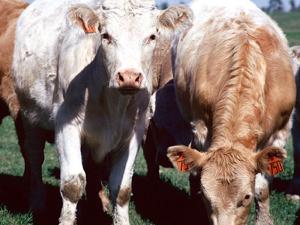
Under-dosing is a significant risk factor for resistance because exposure to low doses of a wormer (pour-on, oral and injectable) may allow susceptible parasites to survive and acquire resistance.
If a scale isn’t handy, Uehlinger suggests using a weight tape that goes around the girth (smallest diameter behind the shoulder blades). The measurement in inches corresponds with a weight in pounds.
6. Think biosecurity
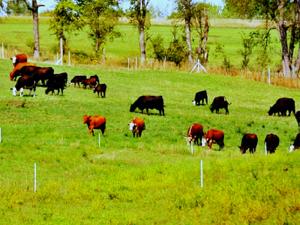
Regardless of the source, new cattle need to be isolated, assessed and dewormed, if necessary, before they hit the grass. In the event that they are carrying resistant parasites, they should be grazed on pastures that are likely contaminated, or grazed with the other cattle. The contaminated pasture and other cattle will be hosts to refugia (susceptible parasites) and dilute the gene pool of resistant parasites.

